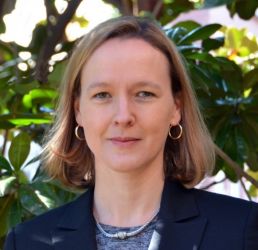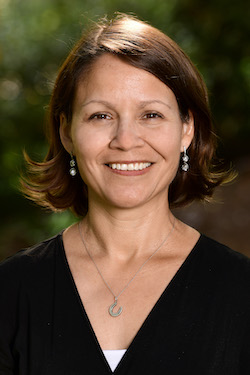Exposures and Latent Disease Risk: Session I - Linking Exposures to Diseases with Long Latency Periods
Sponsored by: NIEHS Superfund Research Program
Archived: Monday, May 11, 2020
Exposures and Latent Disease Risk: Session I - Linking Exposures to Diseases with Long Latency Periods
2020-05-11
NIEHS Superfund Research Program
The NIEHS Superfund Research Program (SRP) is hosting a Risk e-Learning webinar series focused on understanding the health effects of exposures when there is a lag between exposure and the onset of the disease. The first session will introduce exposures and latent disease risk, including information about windows of susceptibility, later-life health outcomes, and will set the stage for the other sessions.
SRP Director William Suk, Ph.D., M.P.H., will provide an overview of the series and briefly discuss the importance of linking exposures to diseases with long latency periods.
Rebecca Fry, Ph.D., of the University of North Carolina at Chapel Hill SRP Center, will provide an overview of arsenic and its latent life health impacts. Inorganic arsenic continues to poison the drinking water of millions of individuals around the globe. Exposure to arsenic early in life is associated with later life health effects in both human populations and rodent models. Increasing evidence suggests that these later life health effects may be tied to changes to the epigenome.
Heather Stapleton, Ph.D., of the Duke University SRP Center, and Seth Kullman, Ph.D., a co-investigator on Stapleton's Duke SRP project as well as a North Carolina State University SRP Center researcher, will discuss how flame retardants and environmentally relevant mixtures induce adipogenesis, and the long-term impacts on metabolic disorders. People are chronically exposed to mixtures of contaminants in the indoor environment, and many of these contaminants are known to impact endocrine function. Their research groups have been exploring the mechanisms by which flame retardants and mixtures containing flame retardants isolated from house dust effect adipogenesis and osteogenesis. They seek to understand whether these compounds and mixtures of these compounds can potentially impact human health outcomes. This talk will discuss research on the adipogenic and osteogenic activity from commercial mixtures such as Firemaster 550, individual chemicals, and house dust extracts, and their associations with select phenotypic and metabolic endpoints measured in a small fish models of human disease, cell cultures, and human cohorts.
Brian Berridge, D.V.M., Ph.D., scientific director of the NIEHS Division of the National Toxicology Program (NTP), will discuss the assessment of latent hazards at NTP. It is generally accepted that early life and chronic low-level exposures to some environmental agents can cause or contribute to later life health effects. Modeling these contributions is challenging and the focus of a number of traditional approaches to environmental toxicology testing. The DNTP is actively building capabilities to expand our ability to understand the long-term health effects of environmental exposures.
Accessibility, Recording, and Content Disclaimer
Rehabilitation Act Notice for Reasonable Accommodation
It is EPA's policy to make reasonable accommodation to persons with disabilities wishing to participate in the agency's programs and activities, pursuant to the Rehabilitation Act of 1973, 29 U.S.C. 791. Any request for accommodation should be made to Sara Amolegbe at 919-213-4906 or sara.amolegbe@nih.gov, preferably one week or more in advance of the webinar, so that EPA will have sufficient time to process the request. EPA would welcome specific recommendations from requestors specifying the nature or type of accommodation needed. Please note that CLU-IN provides both alternate phone call-in options and closed captioning for all webinars, and requests for these specific accommodations are not necessary.
Webinar Recording
By participating in this CLU-IN webinar, you automatically agree to authorize recording of audio and visual content presented during this live event and consent to subsequent use of this recording in the public domain by the U.S. Environmental Protection Agency. This recording may include questions, comments and poll responses provided by you during the live event in addition to your name, voice, image or likeness. This recording will be made available after the conclusion of the live event as part of the CLU-IN webinar archives, and will remain available indefinitely. If you do not wish to consent to the recording, please do not join the live event, and contact Jean Balent at 202-566-0832 or balent.jean@epa.gov to discuss your concerns.
Content Disclaimer
This webinar is intended solely to provide information to the public. The views and opinions expressed as part of this webinar do not necessarily state or reflect those of the U.S. Environmental Protection Agency. It is not intended, nor can it be relied upon, to create any rights enforceable by any party in litigation with the United States, or to endorse the use of products or services provided by specific vendors. With respect to this webinar, neither the United States Government nor any of their employees, makes any warranty, express or implied, including the warranties of merchantability and fitness for a particular purpose, or assumes any legal liability or responsibility for the accuracy, completeness, or usefulness of any information, apparatus, product, or process disclosed, or represents that its use would not infringe privately owned rights.
Presenters:
 William Suk, Ph.D., M.P.H., Superfund Research Program, National Institute of Environmental Health Sciences (suk@niehs.nih.gov or 984-287-3325)
William Suk, Ph.D., M.P.H., Superfund Research Program, National Institute of Environmental Health Sciences (suk@niehs.nih.gov or 984-287-3325)
William Suk, Ph.D., M.P.H., is director of both the Superfund Research Program (SRP) and the Hazardous Substances Research Branch in the NIEHS Division of Extramural Research and Training. Suk has served as director of the SRP, a program established by Congress as part of the reauthorization of Superfund in 1986, since its inception. The SRP fosters interdisciplinary research approaches to address the problems associated with potentially hazardous environmental exposures. His affiliation with a number of organizations and committees include: Roundtable on Environmental Health Sciences, Research, and Medicine, Institute of Medicine, National Academy of Sciences; International Advisory Board of the Chulabhorn Research Institute, Bangkok, Thailand; and World Health Organization Consultation on Scientific Principles and Methodologies for Assessing Health Risks in Children Associated with Chemical Exposures. He is also a member of a number of trans-NIH committees. He received his Ph.D. in microbiology from the George Washington University Medical School, and his master's in public health in health policy from School of Public Health at the University of North Carolina at Chapel Hill.
 Rebecca Fry, Ph.D., University of North Carolina SRP Center (rfry@email.unc.edu or 919-843-6864)
Rebecca Fry, Ph.D., University of North Carolina SRP Center (rfry@email.unc.edu or 919-843-6864)
Rebecca Fry, Ph.D., is the Carol Remmer Angle Distinguished Professor in Children's Environmental Health and Associate Chair at the Gillings School of Global Public Health at the University of North Carolina-Chapel Hill in the Department of Environmental Sciences and Engineering. She is the founding Director of the Institute for Environmental Health Solutions (IEHS) at UNC-Chapel Hill and is a leading expert in environmental epigenetics and toxicogenomics. A major focus of her laboratory is to identify mechanisms underlying the deleterious impacts of toxic exposures during the prenatal period with a focus on the epigenome and developmental origins of health and disease. Her group has identified epigenetic mechanisms that relate toxic substances to pregnancy complications, children's health, and cancer outcomes. Fry's laboratory uses transdisciplinary approaches including human population-based research, cell culture-based research and mouse model-based research to refine the understanding of chemical exposure and toxicity. Her lab has published on a host of toxic substances including but not limited to acetaminophen, arsenic, cadmium, disinfection byproducts, and per- and polyfluoroalkyl substances (PFAS). She has participated in advisory committees and expert panels, including the committee for the National Academies of Science (NAS) National Research Council for the Integrated Risk Information System (IRIS) review of inorganic arsenic, a reviewer for the cancer and non-cancer risk assessment of arsenic in food by the Food and Drug Administration (FDA), and a reviewer for the International Agency for Research on Cancer (IARC). Fry received her Ph.D. in biology from Tulane University with dissertation research at Yale University and her B.S. in biology from William Smith College (Magna Cum Laude). Her post-doctoral training was carried out at Massachusetts Institute of Technology (MIT) in toxicogenomics and environmental health sciences.
 Brian Berridge, D.V.M., Ph.D., NIEHS National Toxicology Program
Brian Berridge, D.V.M., Ph.D., NIEHS National Toxicology Program
Brian R. Berridge, D.V.M., Ph.D., D.A.C.V.P., serves as the scientific director of the NIEHS Division of the National Toxicology Program (DNTP). As the scientific director, he provides policy, analytical, and scientific leadership for DNTP as well as planning, managing, and coordinating its internal and external activities. In addition, in a dual-role as associate director of the National Toxicology Program (NTP), he manages day-to-day operations and fosters interactions with other federal agencies on NTP activities.
Berridge joined the NIH in January of 2018. Previous to NIEHS, Berridge spent 17 years in the pharmaceutical industry in varying roles as a toxicologic pathologist at Eli Lilly in Indianapolis, Indiana, and GlaxoSmithKline in Research Triangle Park, North Carolina. Berridge is an Oklahoma State University-trained veterinarian with residency and Ph.D. training from Texas A&M University. He is a Diplomate of the American College of Veterinary Pathologists with post-doctoral training in comparative cardiovascular pathology from the Texas Heart Institute in Houston, Texas. His areas of interest and expertise include toxicologic and comparative pathology with particular interest in cardiovascular and renal pathology. He is a veteran of the U.S. Air Force where he was a non-commissioned officer trained as a histopathology and electron microscopy technologist.
Since joining NIEHS, Berridge has worked to advance public health and toxicology in ways that are translatable, predictive, and timely. He has broadened DNTP's traditional focus on studying specific chemicals to include analyzing how chemical exposures affect the development of human disease. Initiatives have been introduced to concentrate research and translation efforts in cardiovascular hazard assessment, developmental neurotoxicity, and carcinogenicity testing. These health effects innovations provide opportunity for working across a continuum of knowledge - using contemporary tools such as literature analysis, animal studies, in vitro systems, and in silico or computational analytics - to better understand these diseases and how environmental agents might contribute to them. These efforts complement traditional strategic areas of study within DNTP that are agent-focused and for which DNTP scientists have led research, testing, and literature-analysis activities in support of the NTP since 1978.
 Heather Stapleton, Ph.D., Duke University SRP Center
Heather Stapleton, Ph.D., Duke University SRP Center
Heather Stapleton, Ph.D., is an environmental chemist and exposure scientist at the Nicholas School of the Environment at Duke University. She currently serves as deputy director for the Duke SRP Center, and director of the Duke Environmental Analysis Laboratory. Her research interests focus on identifying halogenated chemicals in consumer products and evaluating human exposure to these chemicals, particularly in pregnant women and children. In addition, she is conducting research to understand how persistent contaminants impact thyroid hormone regulation, particularly during pregnancy, and understanding impacts of chemical mixtures on metabolic outcomes (e.g., triglyceride formation). She was an NIEHS ONES (Outstanding New Environmental Scientist) awardee (2008) and in 2012 she testified in front of the U.S. Senate Environment & Public Works committee on human exposure and toxicity of new-use flame retardants. Additionally, she has helped to develop resources for the general public to support free testing for flame retardants in consumer products.
 Seth Kullman, Ph.D., North Carolina State University SRP Center (seth_kullman@ncsu.edu or 919-515-4378)
Seth Kullman, Ph.D., North Carolina State University SRP Center (seth_kullman@ncsu.edu or 919-515-4378)
Seth Kullman, Ph.D., received his doctorate degree from the University of California at Davis in Pharmacology and Toxicology (1996) and completed a postdoctoral fellowship in the Department of Veterinary Medicine at the University of California at Davis in 2000. Kullman joined the faculty of the Integrated Toxicology Program at Duke University in 2000 and served as director of the Duke University SRP Center Functional Genomics Core (2004-2007). He then joined the faculty of North Carolina State University (NCSU) in 2008 and is a Full Professor of Toxicology in the Department of Biological Sciences. He now leads a project as part of the NCSU SRP Center.
Kullman has a long-standing history of utilizing small aquarium fish models in mechanistic toxicity studies with an emphasis on developmental biology, endocrine biology and metabolic disruption. His laboratory employs molecular, comparative, and functional genomic approaches to examine how exposure to environmental stressors (dys)regulate gene regulatory networks that govern critical steps of cell differentiation and embryonic development. Much of his work is focused on nuclear receptors and ligand-activated transcription factor signaling. His recent studies are directed towards elucidating coordinated cellular events facilitating stem cell commitment in relation to developmental and/or degenerative bone diseases (osteogenesis imperfecta, osteoporosis, osteopenia), and adiposity (obesity, metabolic syndrome). Kullman currently serves as director of the Toxicology Program at North Carolina State University and the co-director of the NIEHS Training Grant Molecular Pathways to Pathogenesis in Toxicology. He has over 75 peer-reviewed publications, book chapters, and technical reports. He has been a visiting scholar at the Mount Desert Island Biological Laboratory and has participated in proposal review panels for the NSF, NOAA, and the National Institute of Environmental Health Sciences. He has participated as an ad hoc member for scientific review with the Environmental Protection Agency, FIFRA-Scientific Advisory Panel Endocrine Disruptor Screening Committee, and currently serves as an Associate Editor to Environmental Health Perspectives. He is a full member of the Society of Toxicology, Society for Environmental Toxicology and Chemistry, and the Endocrine Society.
Moderators:
 Danielle J. Carlin, Ph.D., D.A.B.T., NIEHS Superfund Research Program (danielle.carlin@nih.gov)
Danielle J. Carlin, Ph.D., D.A.B.T., NIEHS Superfund Research Program (danielle.carlin@nih.gov)
Danielle Carlin, Ph.D., D.A.B.T., is a health scientist administrator with the NIEHS Superfund Research Program (SRP). Her position consists of providing guidance and advice to grantees applying for SRP Center grants and serving as the lead liaison between SRP trainees and the various training opportunities offered by SRP. Her current research interests include chemical mixtures, combined exposures, metals, asbestos, and xenobiotic metabolism. Dr. Carlin conducted her postdoctoral training at the University of North Carolina, where she first studied aerosolized drugs/vaccines for treatment and prevention of tuberculosis for two years and then focused on the toxicological effects of exposure to Libby amphibole asbestos in the rat model. She received her Ph.D. in 2005 from Kansas State University, College of Veterinary Medicine, Department of Anatomy and Physiology. She also has a B.S. and M.S. in animal science from New Mexico State University.
 Jean Balent, U.S. EPA Technology Innovation and Field Services Division (balent.jean@epa.gov or 202-566-0832)
Jean Balent, U.S. EPA Technology Innovation and Field Services Division (balent.jean@epa.gov or 202-566-0832)
Ms Balent is on the staff of the EPA's Technology Innovation and Field Services Division where she has worked to collect and disseminate hazardous waste remediation and characterization information since 2003. Ms Balent manages the Clean Up Information Network website and actively supports online communication and collaboration resources available to EPA. She formerly worked with the US Army Corps of Engineers Environmental Engineering Division in the Buffalo District. Ms Balent was also a member of the SUNY-Buffalo Groundwater Research Group where she constructed and tested large scale models of groundwater flow. Ms Balent has also conducted research relating to the Great Lakes, environmental remediation, and brownfields re-development. She holds a Bachelor's degree in environmental engineering from SUNY-Buffalo and a Master's degree in Information Technology from AIU.
Webinar Slides and References:
Webinar Slides and References:
-
 Slide Presentation for Rebecca Fry, Ph.D., University of North Carolina (2.10MB/PDF)
Slide Presentation for Rebecca Fry, Ph.D., University of North Carolina (2.10MB/PDF)
-
 Slide Presentation for Heather Stapleton, Ph.D. and Seth Kullman, Ph.D. (8.98MB/PDF)
Slide Presentation for Heather Stapleton, Ph.D. and Seth Kullman, Ph.D. (8.98MB/PDF)
-
 Slide Presentation for Brian Berridge, D.V.M., Ph.D., NIEHS (3.87MB/PDF)
Slide Presentation for Brian Berridge, D.V.M., Ph.D., NIEHS (3.87MB/PDF)
Additional Resources:
- Mechanisms Underlying Latent Disease Risk Associated with Early-Life Arsenic Exposure: Current Research Trends and Scientific Gaps
- Benchmark Dose Modeling Estimates of the Concentrations of Inorganic Arsenic That Induce Changes to the Neonatal Transcriptome, Proteome, and Epigenome in a Pregnancy Cohort
- Prenatal Arsenic Exposure and the Epigenome: Identifying Sites of 5-methylcytosine Alterations That Predict Functional Changes in Gene Expression in Newborn Cord Blood and Subsequent Birth Outcomes
- Skeletal Changes Through the Lifespan - From Growth to Senescence
- Thyroid Receptor Antagonism as a Contributory Mechanism for Adipogenesis Induced by Environmental Mixtures in 3T3-L1 Cells
- Chemical Mixtures Isolated from House Dust Disrupt Thyroid Receptor ß (TRß) Signaling
- National Toxicology Program
- Key Genetic and Epigenetic Mechanisms in Chemical Carcinogenesis
If you have a suggested topic or idea for a future CLU-IN internet seminar, please contact:
Technology Integration and Information Branch
PH: 202-566-0832 | Email: balent.jean@epa.gov
Technology Integration and Information Branch
PH: 202-566-0875 | Email: adam.michael@epa.gov





